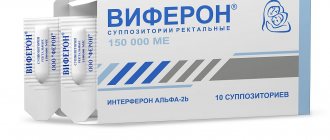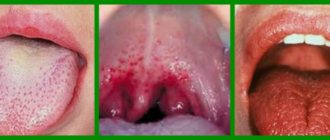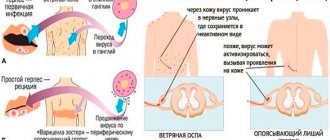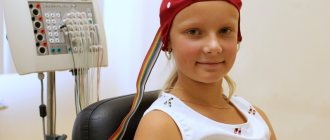Like any other pathological conditions, there can be reasons for a runny nose in infants.
- physiological;
- pathological.
Physiological reasons
The mucous membrane of the nasal cavities immediately after birth, although formed correctly, cannot fully perform its functions and participate in the regulatory mechanisms of the body. In some children, this leads to excessive dryness of the nasal cavity with insufficient secretion production, while in others it leads to excessive secretion - a newborn runny nose.
The functioning of the mucous membrane returns to normal only after reaching 10 months of age. There's no need to worry. This is not dangerous and should go away on its own over time, but the ENT doctors at Dr. Korenchenko’s clinic advise you to see a pediatrician. so as not to miss the beginning of the development of the pathological process behind the imaginary well-being.
Pathological causes
The most common cause is colds, which newborns suffer from especially often. Your own immunity has not yet been formed, and your mother’s is not always effective enough and, moreover, weakens every day. Any infection that goes completely unnoticed in an adult or older child can cause acute respiratory infections and a runny nose in a newborn.
The first symptoms of an acute infectious disease are a rise in temperature and a runny nose in the baby. Later, cough, shortness of breath, and difficulty breathing occur. Sleep and appetite disorders. The child becomes restless, cries, and refuses to eat. Excessive snot in a baby causes irritation of the skin around the nose, on the upper lip, and in the nasolabial folds. At the first appearance of such symptoms, we strongly advise you to immediately contact your pediatrician.
Another common cause of a runny nose in a newborn is an allergic reaction to an external irritant. With age and with the formation of one’s own full-fledged immune defense, this disease can go away on its own, but in infancy, intolerance to any substances is more common than in adults. Irritants can be ordinary household dust, the hair of pets or birds, foreign odors, creams and preparations that are used to treat the baby’s skin, even the smell of the mother and breast milk can provoke snot in a baby.
A relatively uncommon cause of snot in infants is vasomotor rhinitis, a disease associated with impaired blood supply to the nasal mucosa. Only a doctor can make a correct diagnosis.
Nasal cavity and paranasal sinuses
The size of the nasal cavity in newborns and infants is relatively small. The nasal cavity is shorter, narrower and located lower, compared to other age groups, due to underdevelopment of the facial skeleton. The vertical size of the nasal cavity is significantly reduced due to the absence of a perpendicular plate of the ethmoid bone, which is formed only by 6 years of age. The lower wall of the nasal cavity is in close contact with the tooth germs in the body of the upper jaw, which is associated with the risk of developing osteomyelitis of the upper jaw due to inflammation of the nasal cavity and ethmoid sinuses. Acceleration of growth occurs already in the first half of life and is associated with intensive development of the skull, mainly the maxillary region, and teething.
Along with the small size of the nasal cavity, a sharp narrowing of the nasal passages, closed by well-developed nasal conchas, is important. The inferior turbinates are located low and fit tightly to the bottom of the nasal cavity, as a result of which the lower nasal passages are impassable for air. The upper and middle nasal passages are practically not expressed; children are forced to breathe through a narrow common nasal passage. In this age group, severe difficulty in nasal breathing often occurs, especially when mucous secretions or crusts accumulate in the nasal cavity.
As a result of the discrepancy between the significant volume of the nasal concha and the narrow respiratory area, acute rhinitis in newborns and infants is severe, with a predominance of general symptoms and the frequent development of complications. Even a slight swelling of the mucous membrane of the narrow and small nasal cavity leads to the cessation of nasal breathing. The child’s breathing takes on a “volatile” character: children breathe frequently and shallowly, but the wings of the nose do not swell, as with pneumonia. Sucking is severely difficult or impossible, sleep is disturbed; the child is restless, body weight decreases, and dyspepsia and hyperthermia may develop. Breathing through the mouth leads to aerophagia with flatulence, which further complicates breathing and leads to disruption of the general condition of the child. When the nose is stuffy, the child tilts his head back to make it easier to breathe, and convulsions are possible. Due to the pronounced tendency to generalize any inflammatory processes in newborns and infants, acute rhinitis occurs as acute nasopharyngitis. At the same time, on the soft palate you can see reddened tubercles protruding anteriorly - clogged mucous glands.
This age group is characterized by the so-called posterior runny nose, caused by the accumulation of infected mucus in the posterior parts of the nose, associated with difficulty in draining secretions into the nasopharynx due to the structural features of the choanae. On the back wall of the pharynx, stripes of viscous sputum descending from the nose are visible, hyperemia of lymphoid granules in the back wall of the pharynx; Enlarged occipital and cervical lymph nodes can be identified.
The mucous membrane of the nasal cavity in young children is very delicate and well vascularized. The folding of the mucous membrane of the nasal septum observed in newborns soon disappears. The ciliated epithelium directly passes into the stratified epithelium of the nasal vestibule. An important feature of the nasal cavity in newborns and children in the first half of life is the absence of cavernous (cavernous) tissue in the area of the free edge of the lower and middle turbinate. In this regard, children of this age practically do not experience spontaneous nosebleeds, unlike older children. If bloody discharge from the nose appears, it is necessary to conduct a thorough examination to exclude congenital hemangioma or a foreign body in the nasal cavity. For the same reason, in newborns and children in the first six months of life, it is not advisable to use vasoconstrictor nasal drops, the action of which is designed to reflexively contract the cavernous tissue of the nasal turbinates. The rarity of spontaneous nosebleeds is also explained by the underdevelopment and deep location of the branches of the nasopalatine artery and its anastomoses in the anteroinferior part of the nasal septum (Kiesselbach's bleeding zone).
The paranasal sinuses in newborns are underdeveloped and are formed during the development of the facial skeleton and the growth of the child. At birth, there are two paranasal sinuses: a well-developed ethmoid sinus (anterior and middle cells of the ethmoid labyrinth) and a rudimentary maxillary sinus in the form of a narrow slit (mucosal diverticulum) at the inner corner of the orbit in the thickness of the bone of the upper jaw. The frontal, sphenoid sinuses and posterior cells of the ethmoid bone are in their infancy. In this regard, among diseases of the paranasal sinuses in newborns and infants, damage to the ethmoidal labyrinth (ethmoiditis) predominates, which is especially severe with orbital and septic complications.
Snot in a baby
Very often situations arise when a child has snot, but there are no signs of a cold. This type of runny nose is physiological in nature and can continue until the newborn is 2 months old. Factors that cause snot in newborns:
- Infection. Most often, colds occur when a viral infection enters the body, transmitted by airborne droplets. ARVI in infants progresses rapidly and manifests itself with pronounced symptoms.
- Allergy. Snot in children can also be allergic in nature. They occur when nasal inhalation of allergens such as dust, pollen of flowering plants, fluff, and wool. In such situations, the breathing process becomes more difficult, the baby begins to sneeze, and watery snot comes out of the nose. Vascular response to external stimuli. Very often, snot in newborns occurs when the nasopharyngeal vessels are highly sensitive to environmental factors. This process usually manifests itself with bouts of sneezing, alternating sinus congestion, and copious nasal discharge.
- Enlarged adenoids. A peculiarity of the physiology of the children's respiratory system is that at birth, adenoids begin to grow rapidly in children. They sometimes provoke the formation of snot, which has a greenish color. In such cases, it is necessary for the baby to drip a 1% solution of collargol into the nose.
Treatment of rhinitis in newborns is difficult, due to the narrow nasal passages. The course of rhinitis in newborns has its own characteristics, which is explained by the physiological and anatomical characteristics of the infant. The complexity of the course of the disease lies in the fact that infants cannot independently free their noses from accumulated mucus, and also do not know how to breathe through their mouths, which is especially dangerous during sleep and breastfeeding.
Many parents don’t know what to do when their newborn’s snot bothers their baby day and night. You can’t start drug treatment for your baby’s rhinitis on your own; therapy can only be prescribed by a specialist.
How to treat a runny nose in a newborn depends on the factors that caused this condition of the child’s nasal mucosa. Even before visiting a specialist’s office, parents can take steps to alleviate their baby’s condition. First of all, if a baby has a severe runny nose that makes nasal breathing difficult, it is necessary to clear the nasal passages of pathological secretions. Solutions based on sea water or regular saline are well suited for this procedure.
Humidifying the air should be another action for parents who don't know what to do when their baby has a runny nose. A well-ventilated room with moist air promotes faster recovery of the nasal mucosa. You can increase the humidity in a dry room by using a humidifier. The optimal air humidity in the room where the sick child is is 50% at a temperature of 20-21ºС.
Treatment of clear snot in a child should be carried out only as prescribed by a doctor, since such a symptom may indicate several diseases. Regardless of the cause of rhinitis, parents should regularly clean the baby’s nose, thereby improving nasal breathing. To do this, you can use a special device for suctioning mucus - a nasal aspirator. If the clear mucus in the nose is so thick that it is difficult to remove it from the nasal cavity, the mucus must first be thinned. Solutions based on sea water, as well as decoctions of herbs such as chamomile, are well suited for this. You need to drop a few drops into each nasal passage of the child, and then use an aspirator. It is important to adhere not to symptomatic treatment, but to take actions aimed at eliminating the cause of the disease. Parents should promptly contact specialists who will tell you how to treat clear snot in a child, having previously established an accurate diagnosis.
Pharynx
In children, near the median septum of the retropharyngeal cellular space, there are lymph nodes into which lymphatic vessels flow from the palatine tonsils, posterior parts of the nasal and oral cavities. With age, these nodes atrophy; in children they can fester, forming a retropharyngeal abscess.
Adenoids are common in children.
Larynx
In newborns and young people, the larynx is located slightly higher than in adults (in adults, the upper edge of the larynx is at the border of the IV and V cervical vertebrae).
In children, the Adam's apple is soft and not palpable.
In children, the subglottic cavity has a well-developed loose submucosal layer. Its inflammatory swelling is called false croup.
Outer ear
In a newborn and infant in the first 6 months of life, the entrance to the external auditory canal looks like a gap due to the fact that the upper wall is almost closely adjacent to the lower one.
In newborns, the temporal bone is not yet fully developed, so they do not have the bony part of the ear canal, there is only a bone ring to which the eardrum is attached. The bony part of the auditory canal is formed by the age of 4, and up to 12-15 years the diameter of the lumen, shape and size of the external auditory canal change.
Eardrum
In children, the eardrum has an almost round shape and is much thicker than in adults (0.1 mm), due to the inner and outer layers. Therefore, with acute otitis media in children, perforation of the tympanic membrane may not be observed.
Middle ear
The auditory (Eustachian) tube in children is wider and shorter than in adults.
Mastoid
In a newborn, the mastoid part of the middle ear looks like a small elevation behind the superoposterior edge of the tympanic ring, containing only one cavity - the antrum. The formation of the mastoid process ends by the beginning of the 7th year of the child’s life.
Barrier function of the mucous membrane
The first barrier to pathogens is the oropharynx. Thanks to the structure of the organ and the composition of the mucus lining it, comprehensive protection is provided. Natural purification mechanisms provide air filtration and mucus transport.
Epithelial cells are able to attract and retain molecules that are involved in immune processes. The mucous membrane of the respiratory tract has a protective effect due to the presence of local immunity factors in the mucus and submucosal layer. Lymphocytes, phagocytes, a complex of protective proteins, interferon (IFN), and lysozyme, the concentration of which in the tonsils is 300 times higher than in the blood serum, participate in the formation of local immunity. Immunoglobulin A helps prevent the replication of viruses; it has the property of combining with foreign protein agents, excluding them from circulation.
Interferons enhance the synthesis of antiviral proteins, which inhibit the multiplication of the virus inside the cell and protect healthy cells from infection. However, viral infections can cause an imbalance in the interferon system. Prolonged presence of bacteria and viruses can cause chronic respiratory diseases.
The mucus covering the epithelium from the nasal cavity to the lower sections of the bronchi moisturizes the mucous membranes, protecting them from drying out, mechanical, chemical influences, pathogenic microorganisms and is capable of absorbing dirt particles from the inhaled air.
Rhinobronchial secretion can be thought of as a constantly renewed filter; “waste” material is removed from the respiratory tract using the oscillatory movements of the cilia of the mucosal epithelium or cough.
Mucociliary transport ensures the sanitization of the respiratory tract and performs the barrier, immune and cleansing functions of the respiratory tract. Clearing the respiratory tract of foreign particles and microorganisms occurs due to their settling on the mucous membranes and subsequent elimination along with mucus.
The rhinobronchial secretion contains such natural helpers in the fight against infection as lysozyme - breaks down the cell walls of most bacteria, lactoferrin - a protein that can bind iron ions, making it unavailable for bacterial metabolism, fibronectin prevents the adhesion of bacteria; interferons have antiviral activity. However, the body’s own strength in resisting infection may not be enough, so children under 5-6 years old can suffer from respiratory diseases up to 6-7 times a year. Cough and runny nose are some of the leading symptoms of acute respiratory infections.
Hearing loss
This is a disease characterized by hearing loss, even complete loss. The pathology occurs among people of different age categories; it can be a congenital or acquired problem. Hearing loss in newborns most often appears as a result of a woman suffering from any infectious or viral diseases during pregnancy.
The problem of hearing impairment in newborns is very relevant from both a social and medical point of view. The thing is that hearing loss in a child leads to deviations in speech development and affects intelligence and personality formation.
Therefore, even before discharge, in many modern maternity hospitals, every baby undergoes a test for hearing loss in newborns using special automated equipment. If the test is not passed, a referral to a specialist is issued for further examination and hearing testing.
Symptoms of congenital hearing loss
The main symptom of hearing loss in newborns is the absence of any response to sounds. With normal auditory development, babies startle at the age of two weeks from sudden or too loud sounds.
At one month, the baby already responds to his mother’s voice; at three months, he recognizes his favorite toys by sound. And turns his head towards the sound. If such a reaction is not observed, you should immediately consult a doctor.
The most likely causes of hearing loss in newborns include:
- influenza, toxoplasmosis, herpes and rubella acquired by the mother during pregnancy;
- drinking alcohol and smoking;
- prematurity of the baby, weight less than 1500 g;
- bad heredity.
Also, the risk of hearing loss in newborns increases if the pregnant woman took toxic medications (streptomycin, furosemide, aspirin, gentamicin, etc.)
There are three degrees of hearing loss in newborns:
- The first degree of the disease is considered the mildest, in which a person can perceive whispers at a distance of 1 to 3 meters, and spoken speech of average volume from 4 meters. Difficulties in auditory perception are observed when the interlocutor’s speech is distorted, as well as in the presence of extraneous noise.
- If there is a second degree of hearing loss, the child has difficulty recognizing a whisper at a distance of more than a meter. At the same time, conversational speech is best perceived when the interlocutor is no more than 3.5-4.0 meters away. However, even with such a removal, some words may be perceived as illegible.
- The most severe is the third degree of hearing loss. With such a hearing impairment, whispering is practically inaudible even at a very close distance, and spoken speech can only be perceived at a distance of no more than 2 meters.
Can a cold be dangerous?
The most serious complication in infants is breathing problems. Respiratory failure is the medical name for difficulty breathing. The following are symptoms that should prompt you to immediately consult a doctor or call an ambulance:
- Difficulty taking every breath or shortness of breath
- Difficulty breathing so much that the baby can barely cry
- The spaces between the ribs contract with each breath
- Breathing becomes noisy (eg, wheezing)
- Breathing occurs much faster than usual
- Your baby's lips or face turn blue
- Wheezing (purring or whistling)
- Breathing occurs much faster than usual
- Swallowing problems and drooling
Acute otitis media
Diagnostic feature
Clinical diagnosis. The sequence of development of acute otitis media is the same as in children of other age groups: catarrhal stage of inflammation, formation of exudate, perforation of the eardrum and suppuration from the ear, development of complications or favorable resolution of the process. The most important symptom of the disease—ear pain—in newborns and infants is detected by changes in the child’s behavior. Acute pain occurs suddenly and is usually so severe that the child holds his breath. Children in the second half of life stop playing and grab their ear with their hand. When sneezing, swallowing, coughing, accompanied by an increase in air pressure in the tympanic cavity, the pain intensifies; sometimes the pain subsides. The child is inhibited, pliable, drowsy. At certain intervals, the painful attack is repeated with the same or greater intensity. Sometimes the child’s restless behavior is replaced by seeming calm, the child sleeps a lot, falls asleep during feeding, and is lethargic, which indicates depression of the nervous system. Body temperature rises; children sleep poorly, often wake up screaming and do not calm down for a long time, shudder, moan. The facial expression is pained, a fixed gaze, painful grimaces. Changing the child's position does not have a calming effect.
A child under 4-5 months cannot localize the pain, only helplessly turns his head. Erratic and obsessive movements are observed: a pendulum-like movement of the head and a “symptom of chewing the tongue.” The reason for these movements is the child’s desire to find an optimal position in which the ear would hurt less. At the height of pain, hand cramps (kapellmeister's position) or false opisthotonus are possible. As intoxication increases, convulsive contractions of the eye muscles may occur. Children in the second half of life reach out with their hands to the sore ear, rub it with the back of their hand, and try to stick their finger into the ear canal. Infants refuse to eat; They are more willing to suckle on the breast opposite the side of the sore ear. Pain when pressing on the tragus is characteristic (Vash's symptom), since pressure is directly transmitted through the non-ossified part of the ear canal to the inflamed eardrum (after a year of life, pain when pressing on the tragus indicates only damage to the external auditory canal).
Diagnosis of ENT diseases in infants
Examination and treatment of children differs markedly from working with adult patients. A young patient cannot always clearly explain what is bothering him; he does not know how to properly dissolve pills or gargle. The ability and skills of a good pediatric ENT doctor to find an approach to a sick child and establish psychological contact with him are no less valuable than the professional skills of an otolaryngologist. The physiological and anatomical characteristics of a small child’s body determine the specificity of treatment procedures, examination of ENT organs, and anesthesia (if necessary).
Modern methods for diagnosing ENT pathology include: clarification of parental complaints, questions of the diagnostic and treatment complex, etc., objective examination, laboratory tests, endoscopic and computer studies of the nose, throat, and ear, ultrasound.
Treatment of ENT diseases in infants
The most important task in the treatment of otolaryngological diseases is to prevent the disease from becoming chronic. Therapeutic (drug, physiotherapeutic) methods are used in the treatment of ENT pathology. In recent years, minimally invasive laser and endoscopic methods have been actively used to treat otolaryngological pathologies.
Prevention of diseases of the nasopharynx, larynx and hearing organs in children must be applied from a very early age. A qualified pediatric ENT specialist will help you develop a plan of preventive measures that will help your baby avoid chronic colds and infectious diseases, as well as the risk of various complications.
Remember that, regardless of age and general condition of the body, a child requires constant attention. A pediatric ENT doctor will always help to diagnose the disease in a timely manner, establish its causes, and also prescribe appropriate treatment and prevent possible complications.
Cause of cold
Colds are caused by many respiratory viruses. Healthy children have about 6-8 colds in the first year of life. This is because there are so many viruses that cause colds. With each new cold, the child’s body develops immunity to this virus. The influenza virus causes a more severe cold with fever and muscle aches. A cold is usually a mild illness. However, with a cold, 5-10% of babies experience complications. Most often it is an ear or sinus infection that is caused by bacteria.










